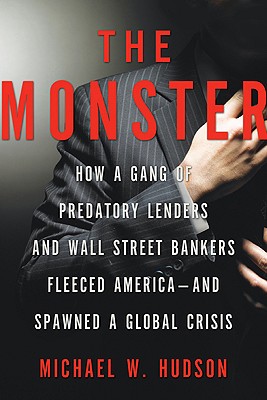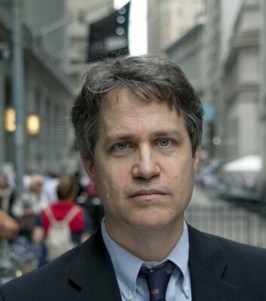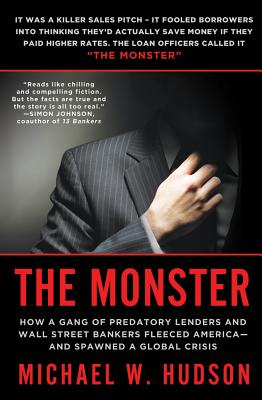
The Monster:How a Gang of Predatory Lenders and Wall Street Bankers Fleeced America--and Spawned a Global Crisis
Interview with Michael W Hudson
March 26, 2018Sign Up to listen to full interview.
About Michael W Hudson
Michael Hudson is a senior editor at at the International Consortium of Investigative Journalists. His two decades of work on mortgage and banking fraud has prompted critics to call him the reporter "who beat the world on subprime abuses," the "guru of all things predatory lending" and "the Woodward/Bernstein of the mortgage crisis."
Previously, he worked previously as a reporter for the Wall Street Journal and the Roanoke (Va.) Times. He has also written for Forbes, the New York Times, the Los Angeles Times, the Washington Post and Mother Jones.
His work has won many honors, including a George Polk Award for magazine reporting, a John Hancock Award for business journalism, an Investigative Reporters and Editors Award, a SPJ/Sigma Delta Chi Award and accolades from the National Press Club, the White House Correspondents' Association, the American Bar Association, New York Press Club and the New York State Society of CPAs.
He edited the award-winning book Merchants of Misery and appeared in the documentary film Maxed Out. His latest book, THE MONSTER: How a Gang of Predatory Lenders and Wall Street Bankers Fleeced America--and Spawned a Global Crisis, was named 2010 Book of the Year by Baltimore City Paper and called "essential reading for anyone concerned with the mortgage crisis" by Library Journal.
His 2011 series of stories for the Center for Public Integrity, "The Great Mortgage Cover-Up," was selected to appear in Columbia University Press's Best Business Writing 2012.
Interview Summary
Before the housing crisis erupted in late 2007, there was a decade-long period of subprime lending targeted at the most vulnerable members of society. The elderly, those facing financial difficulties, and families in transition were forced to pay significantly higher borrowing costs to compensate for their poor credit rating scores.
However, the subprime mortgage lending gathered momentum in the late 90s after Wall Street streamlined the securitization process, and provided a gusher of capital to the non-bank financial companies that operated outside the purview of financial regulators.
With a sharp escalation in the availability of capital, all that subprime lenders had to do was to find borrowers and sell loans back to Wall Street. Bankers worked overtime to mint new securities from these loans and sell for a fee to unsuspecting global investors. Lehman Brothers and Bear Stearns, among others, provided ample capital through their partners or subsidiaries, repackaging these loans to investors and earning hefty fees in the process. The only problem was that the borrowers did not have a clue what they were getting into—something that in many cases was an outright fraud or deception.
In The Monster, award-winning reporter and author Michael W. Hudson narrates a fascinating web of deception and collusion between politicians and subprime lenders while regulators looked the other way. The predatory lending has its origin in the rush to find a customer at any cost in order to sell the loans immediately to investors with very little consequences.
In this remorseless race lenders had only one goal in mind: keep borrowers in debt forever and refinance their customers again and again while financial regulators focused on the “safety and soundness” of lending institutions and not how they treated their customers. During the peak years between 2004 and 2006, subprime lenders were raising and selling more than $700 billion dollars of loans a year before the faulty model collapsed under the heavy weight of mounting loan defaults.
Key Topics
- What is predatory lending?
- Who were the key players involved in subprime lending?
- Why would borrowers with a good credit score sign up for a subprime loan?
- How did subprime lenders sell high interest rate loans on the basis of lower interest rate?
- How do bait-and-switch tactics and nosebleed interest rates work?
- How were lenders able to refinance borrowers again and again?
- Why did financial regulators fail to react to the looming crisis?

